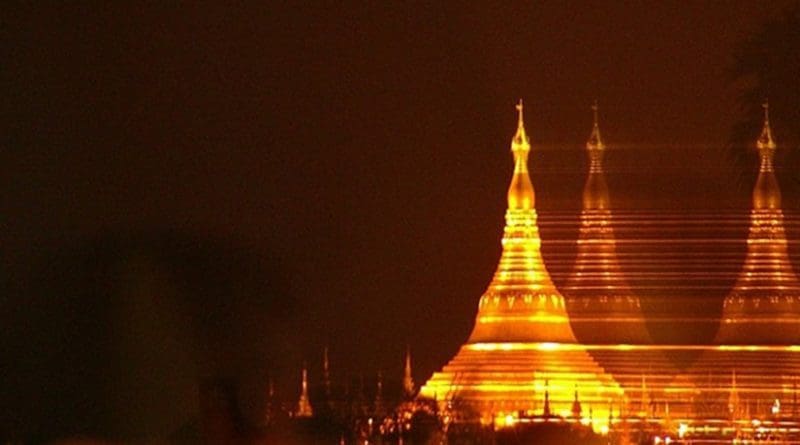Myanmar: The UNFC Is Still Relevant To Peace Process – Analysis
By SAAG
By Dr. S. Chandrasekharan
Media reports indicate that the Myanmar government has agreed to meet the UNFC representatives in the first week of August. This is a good sign and indicates that the Myanmar government is conscious of the fact that though the attenuated UNFC may not have the clout, it is still relevant to the peace process.
With the exit of the KIO (Kachin Independence Organisation) from the UNFC (United Nationalities Federal Council) on the eve of the second meeting of the Panglong Conference, there have been many reports that the Council is likely to disintegrate. But it has not happened.
The KIO was one of the Co-founders of the UNFC and a leading financier too. The KIO leader Gen N’Ban la after taking part in the Council meeting took off the same evening for Naypyidaw to attend the 2nd meeting of the Panglong Conference without telling his colleagues of his intention to attend the conference along the Wa group, the next day. This was seen as a “betrayal” and a let down by other colleagues and what was surprising- the KIO joined hands with the China backed Federal Political Consultative Committee led by the most powerful of the ethnic armed group- the UWSA. Gen N’Ban la is known to be a hardliner amongst the top leadership of the KIO. The decision to leave the UNFC and join a more powerful group backed by China may have been initiated by him as of late the UNFC was toying with the idea of joining the peace process once their nine point demand was accepted in principle by the government.
The UNFC had played a useful part in the cease fire process in the past and should continue to do so without leaving the field totally to the two powerful and inflexible sides- one led by the Burmese Army (Tatmadaw) and the Government led by NLD and that of the Wa led FPNCC.
History
The UNFC was formed in Chiangmai Thailand on February 16, 2011 to bring all the ethnic groups under one umbrella with the objective of not only building ethnic unity but also to establish a genuine multi-party system with a federal union and to collectively deal with the Myanmar government and the Army and also to end the perennial civil wars that have been plaguing the country since its independence. The council was the main organisation initially in negotiating with the then Thein Sein government.
It started with twelve members and there were hopes that this body would in course of time attract other militant organisations to be able to make a common front and a common cause in the interest of all ethnic communities. But this was not to be. Peace building with disparate groups with different backers and objectives was no easy task.
First to leave was the KNU that complained of too much control from the centre. Then came the cease fire offer of government to individual groups and this further led to split within the council with some groups wanting to go with the government while others wanted to stay away. The Pa-O National Organisation and the Chin National Front were suspended of whom the latter has been re-instated.
Of the five remaining groups with the exit of KIO and the Wa National Organisation, the position of another SSPP (Shan State Progressive Party) has also become tenuous with the group joining the Wa, the Council has very few members left.
Yet, the UNFC will still be relevant and have a useful role to play in future for the following reasons.
First and foremost- the peace process cannot be left to the government and the Tatmadaw (the Army) on one side and the China backed and Wa led seven party alliance and its Federal Political Negotiation and Coordination Committee. The negotiation will ultimately be between the government and China. It is no wonder that the Chinese Special envoy Sun Guoxiang played a very active role in “shuttle diplomacy” in meeting the State Counselor Suu Kyi, the Myanmar Army Chief and the representatives of ethnic armed groups who were assembled in Yunnan. Right now it is said that a senior official from China Song Tao, the head of the International Department of the Central Committee of CCCP is flying into Naypyidaw to meet senior official of the government. He would probably meet the State Counselor and the Army Chief as he did last time.
Second- ideologically the KIO does not fit in with the other six groups led by the WA in the seven party alliance. The KIO had been specially targeted by the Army since the cessation of cease fire in 2011 and the Kachin territory has suffered immensely in terms of destruction of villages leaving thousands of IDPs. The KIO had also lost a large number of its important posts and its territory to the Burmese Army. One could say that the Army by its offensives have pushed the KIO into the arms of the better armed WA group who besides being the strongest unit is backed by China.
Third- the UNFC is more democratically oriented and has links with western countries and Japan. It is also sincere in joining the cease fire process and their nine point demands save a few are doable. It is thus necessary for the UNFC to stay alive and equally important for the Myanmar government to treat it equally with all the consideration as a stake holder in the peace process

